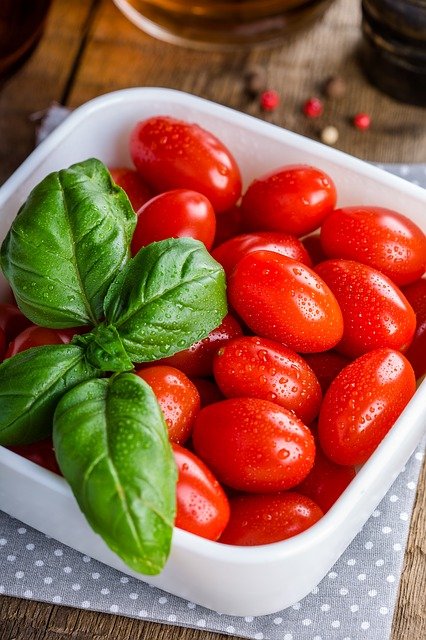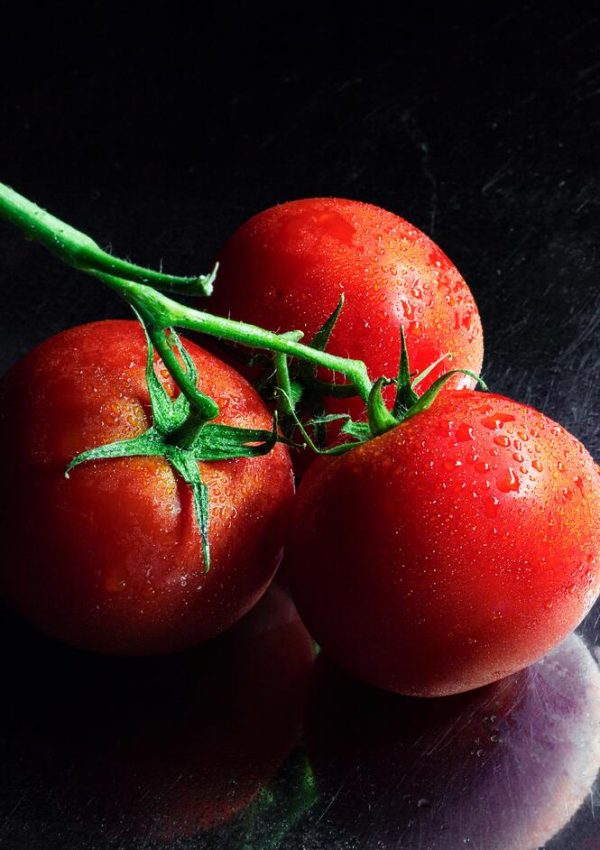
Tomatoes come in different shapes, colors, and tastes. Did you know that the tomato you would use in making stew, isn’t the same as the one you would use in your salad? This also includes cherry tomatoes.
How would you feel walking into your garden and finding ripe cherry tomatoes? Excited, right?
Cherry tomatoes come in different colors: Red, orange, or yellow. They are normally sweet.
Wear your gardening clothes, take all the right gardening tools, and let’s plant our cherry tomatoes!
To grow your tomatoes well, you need to stick to my best tips and tricks.
Tips From Personal Experience!
During early spring and winter may not be the most appropriate time for planting cherry tomatoes. This is because the tender seedlings will easily die due to the cold.
If you are short on space, growing cherry tomatoes in pots are ideal. The cherry tomatoes get their name from their size as they are a bit smaller. So, you can grow even with minimal space.
- Get an Ideal Pot
The first thing is finding an ideal pot or container for growing cherry tomatoes. When planting indoors, ensure the pots and containers are wide enough for the cherry tomatoes because they tend to grow big and spread out. You can choose the 3 to 5-gallon containers to grow your plants. It needs to have drain holes.
2. Choose the Best Soil for Growing Cherry Tomatoes

First, test your soil to know whether it is appropriate for growing cherry tomatoes. The soil needs to be well-draining, spaced out well, and fertile.
The best soil PH for planting cherry tomatoes is between 6.2 and 6.8. The soil should be lightened for swift growth. They can’t grow in soil that is compacted.
If you don’t have suitable soil in your garden, purchase potting mix or fertile soil.
If the soil in your garden is ideal, add the necessary compost, organic fertilizer, and mulch to make it better.
- Growth Requirements for Cherry Tomatoes
They require at least 6 hours of sunlight each day. If you don’t provide sufficient sunlight, the seedlings won’t germinate. Ultimately, the starter plants won’t grow strong.
The area should receive adequate wind that helps in the plants’ proper growth and makes the stem stronger. When you plant the tomatoes in containers, they will need more water. During hot days, you need to water in the morning and evening.
- Pluck Stems in the Cherry Tomatoes
While the cherry plants are still growing, pluck out any stems that are growing against the main stem. This is because there will be competition between the various stems. Hence, the main stem won’t get enough nutrients to grow well.
Remember, when planting, you need to bury most of the bare stalk deeply in the soil. This will help in the root development of the plant. You should be sprinkling lime into the bottom of each hole to make your tomatoes stronger.
- Pinch out Suckers in the Cherry Tomatoes
For proper cherry tomato growth, there is a need for regular pinching off the suckers. Remove the small suckers at the junctions that meet your stalk. Remember to pluck out yellow leaves, sick leaves, and those infested with bugs.
- Staking Cherry Tomatoes
When the plant starts becoming bushy, consider providing support through staking. This will help prevent the cherry tomatoes from lying on the ground that can lead to soil-borne diseases.
Tie the plants stalk gently on the stake using a soft string. The cherry tomatoes grow well when they are picked every day or two.
7. Harvesting Cherry Tomatoes
It will take a couple of months before your tomatoes are ripe. Always check the cherry tomatoes and pick when they have reached the expected color.

Best Practices for Growing Cherry Tomatoes
- If you want to grow cherry tomatoes, look for the determinate kind. These are the dwarf varieties and they will fit well if you grow them in pots. Use the half wine or wooden barrel; or glazed clay pots for growing cherry tomatoes.
- Pick the right size of the pots. The best container needs to be 14 inches wide and 12 inches deep for proper root development. However, if planting larger varieties, choose a bigger container.
- It is appropriate to use a high-quality potting mix with a sufficient amount of nutrient percentage. The cherry tomatoes tend to feed a lot. So, they need to have enough nutrients – for example, peat moss, worm casting, crab meal, bone meal, and much more.
- Mulch the cherry tomatoes in the pot frequently. Mulch is effective for moisture retention, weed suppression, and soil temperature regulation. The ideal time to add mulch is right after transplanting. The best mulch includes dry leaves, sawdust, dry grass, and much more.
- To control certain pests, use neem cake or powder to control them. Just sprinkle a few tablespoons to get rid of the harmful bugs in the plants.
- Water regularly to keep the soil moist and prevent drying. You can use growth lights indoors to grow cherry tomatoes in pots. This helps the plant to photosynthesize and grow better.
Worst Practices for Growing Cherry Tomatoes
- Try to avoid cheap clay or plastic pots. This is because they can make the cherry tomatoes dry out fast and are less durable.
- Try not to use the garden soil straight from your backyard without testing whether it is suitable.
- Don’t use hay as mulch because it can contain some seeds that can sprout when you water the cherry tomatoes.
- Set up cages or stakes before your transplant, as doing that later can harm the roots of the plants.
- Don’t overcrowd the cherry tomatoes. Plant one cherry tomato per pot or container unless you grow in a raised bed; plant cherry tomatoes with the right amount of space. In addition, don’t overwater to prevent blossom end rot.

Start Growing Cherry Tomatoes in a Pot!
Growing cherry tomatoes is easy if you follow all the right procedures. Organic gardening is great for a healthier lifestyle.
So, make sure you provide enough space, soil, container size, and prune frequently. Pluck out the fruits when they grow and become ready for use. I hope you now have a better overview of cherry tomato growth.
Once you master the art of growing cherry tomatoes, you can try other varieties to help spice up your food and salad.
Image courtesy: Unsplash.com and Pixabay.com




